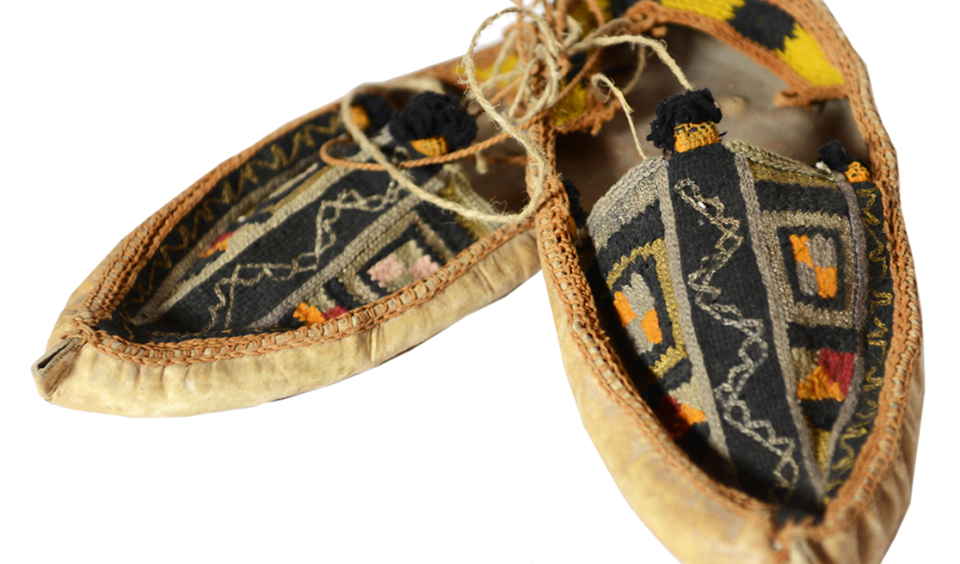Folk costumes have been elaborated over the centuries, preserving ancient features related to the early Balkan and Mediterranean cultures, to the Illyrian and Arbian cultures of the Middle Ages.
The opings used by the Albanians represent a very ancient element of folk clothing inherited from an old Illyrian substrate.
In the simplest variants, they are made of a single piece of leather which makes up both the bottom and the top, covering only the toes. With a system of leather straps and wool grommets, the edges of the boot are first creased, coming close to the leg, then fixed, tying over the back of the leg and around the joint.
This type of opings derives from an Illyrian prototype, well documented in the archaeological finds of Durrnberg, Glasinac and Bihac, from a very early period, in the VI-V centuries BC.
Almost all types of opings, which have been preserved to us, are related to this Illyrian type and are clearly distinguished from the types used by the Greeks and Romans of ancient times, just as they are distinguished from the typical lappets of the Slavic peoples.








 Rruga e Elbasanit, Pallati nr. 111,
Rruga e Elbasanit, Pallati nr. 111,